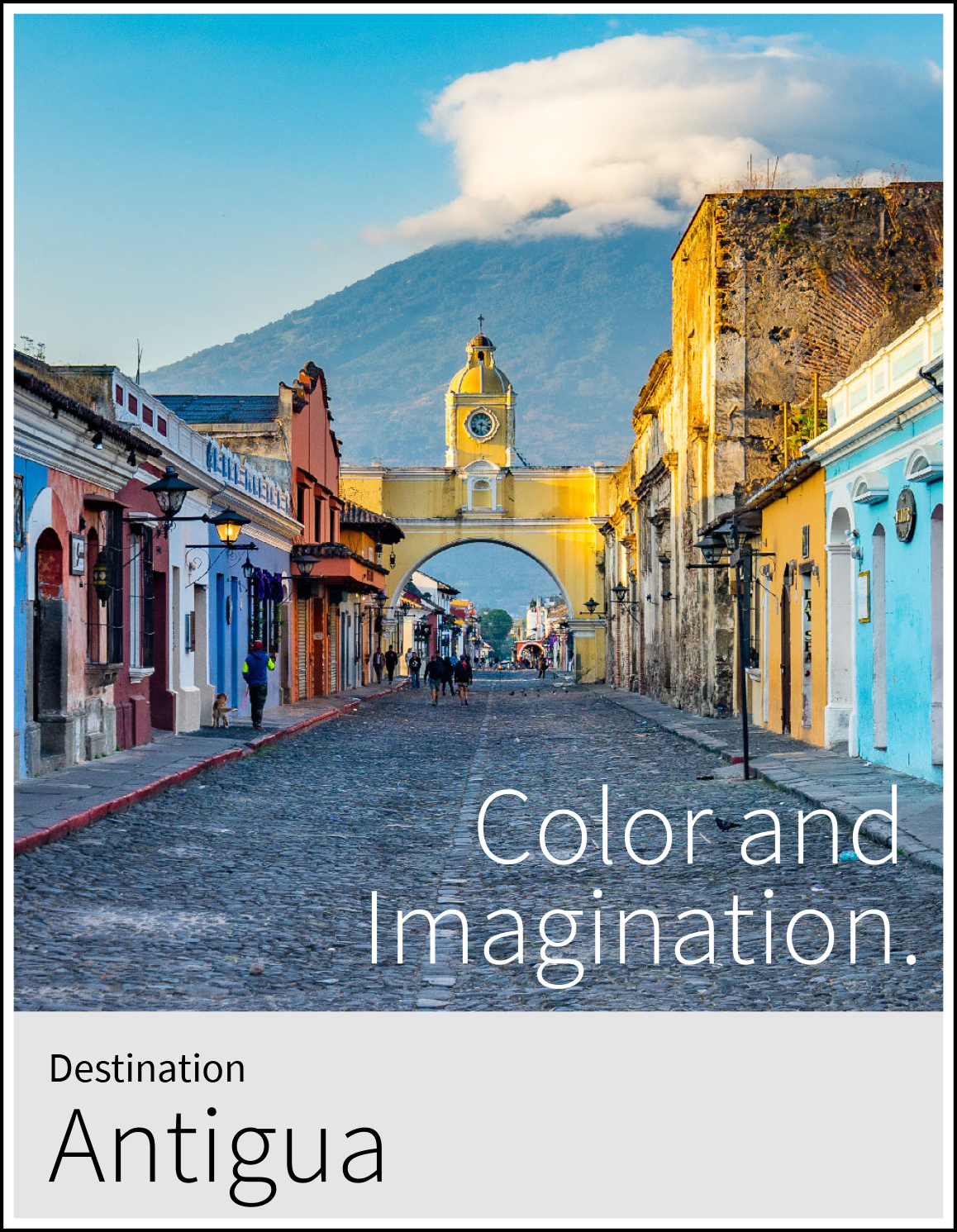Guatemala Volcanoes
Seismic Zones Active Volcanoes Hiking Pacaya Volcano Ring of Fire Volcanic Sand Beaches Majestic Peaks Impressive Vistas Hiking Acatenango Volcano Thrilling Activities
Volcanoes in Guatemala
Guatemala is rich in culture, microclimates and agricultural products. This last attribution directly benefits the rural population and local economies owing to the volcanic activity of the country. An active volcano brings a lot of benefits to the soil that surrounds it. The composition of minerals expulsed during an eruption contain a lot of soil nutrients that increase the fertility of the ground. For this reason, Guatemala is one of the largest producers of fruits and vegetables in Central America, making agriculture an important engine of economy.
Volcanoes are both ravishing and destructive at the same time. Guatemala is well known for the Mayan culture and the wide range of volcanoes it hosts. The Central American volcanic ridge runs parallel to the Pacific coast from Guatemala to Panama. It includes several lava domes, cinder cones and stratovolcanoes. Two of the tallest volcanoes of this chain are in the Western Highlands of Guatemala: Tacana and Tajumulco, both standing over 3,900 m / 12,795 ft above sea level. In total Guatemala is the home to 37 official volcanoes, three of them being in constant activity–Pacaya, Fuego and Santiaguito.
Up next, we leave you with a list of the most popular volcanoes in Guatemala and some insider tips to get you ready for your next adventure.
Agua (3,760 m / 12,340 ft), Fuego (3,763 m / 12,346 ft) and Acatenango (3,976 m / 13,045 ft)
These three volcanoes are the loyal guards of the charming colonial town of Antigua. Being the most photographed peaks of the country, they offer staggering landscapes that you cannot miss while visiting Guatemala.
Fuego is the most active volcano in Guatemala; it explodes around 5-9 times per hour producing impressive ash plumes. Its last big eruption was in June 2018 hitting many unprepared people and claiming thousands of lives. Due to its constant activity, we do not recommend hiking this peak. However, its neighboring volcano Acatenango is safer to hike and it offers incredible vistas of the surrounding mountains and volcanoes.
Insider tip: Camping at the top of Acatenango Volcano is a spectacular experience that we believe every adventurous traveler must live at least once in a lifetime.
Pacaya (2,552 m / 8,373 ft)
Located close to the Pacific coastal plain, Pacaya Volcano is a complex of peaks that has been active since around 20,000 years ago. It is the most popular volcano in Guatemala due to its attainable level of hiking. Active and unpredictable, Pacaya Volcano is a constant show of ash clouds and lava flow. Brave visitors can hike almost up to the cone and have a closer look at the flowing lava!
Insider tip: Make sure you consult first with the local authorities if hiking is possible during the time you are visiting. Sometimes the Park closes due to the extreme volcanic activity.
Toliman (3,158 m / 10,361 ft), Atitlan (3,535 m / 11,598 ft) and San Pedro (3,020 m / 9,908 ft)
85,000 years ago a massive eruption created a huge crater in the Highlands of Guatemala. Today, the caldera is filled with crystal clear water surrounded with abundant vegetation and a great diversity of fauna. This beautiful scenario is guarded by three majestic volcanoes and known as Lake Atitlan. The combination of blue water, volcanoes and mountains makes this place one of the nicest scenic highlights of Guatemala.
San Pedro Volcano is the most popular peak among hikers and requires an advance level fitness. Nevertheless, it is a great experience to know the biodiversity of the region.
Insider tip: For an easier hike, visit the Indian Nose or Mayan Face (Rostro Maya). From the top of this mountain you will enjoy a unique 360 degree view of Lake Atitlan.
Santa Maria (3,772 m / 12,375 ff)
Located in the Western Highlands of Guatemala, Santa Maria is another impressive peak that remains active. Its last big eruption was in 1902, resulting in one of the worst volcanic catastrophes of the 20th century. A group of four lava domes known as Santiaguito emerged from the scar that natural disaster left. These domes have been growing ever since but just one of them remains active. With the lovely backdrop of Quetzaltenango and the high possibilities to catch a glimpse of the explosive activity of Caliente (the active lava dome), visiting Santa Maria Volcano makes for an exciting adventure.
Insider tip: Make sure you start the hike very early in the morning (ideally you reach the summite before 10AM) since the clouds might spoil the views of the stunning scenario up there.



